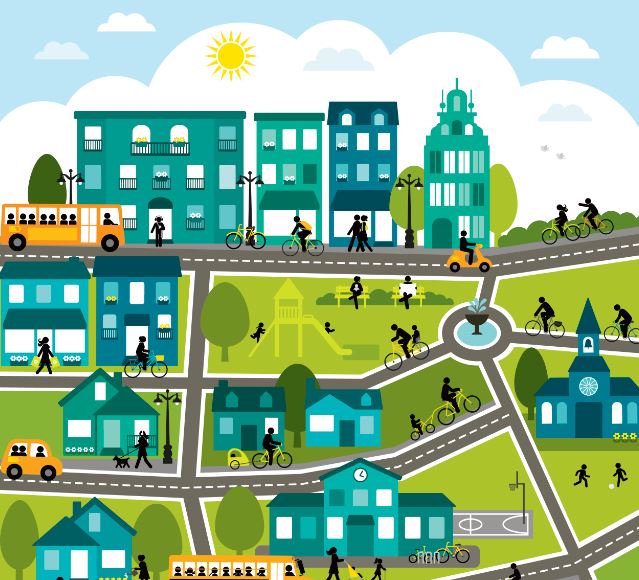AARP Hearing Center

By Joanne Cleaver
When Wausau leaders set about planning the redevelopment of parts of downtown, they included a few single-level houses amid typical two-story town houses, assuming urban-minded millennials would buy them all.
Instead, when homes went on the market last year, the one-story units sold first—snapped up by boomers eager to be closer to the city’s health care centers, restaurants and other amenities.
The retirees’ enthusiasm is reshaping Wausau’s definition of “age-friendly”—a concept other areas of the state are embracing as officials and advocates strive to turn their communities into places where people of all ages can thrive.
“Baby boomers and millennials are looking for the same things,” said Darrin Wasniewski, AARP Wisconsin’s outreach coordinator for its Livable Communities effort. “Everybody wants to be able to walk as much as possible and meet friends.”
So far, five Wisconsin localities, including Wausau, have joined AARP’s Network of Age-Friendly States and Communities, which has more than 380 members nationwide. The goal: encourage leaders to pursue improvements in housing, public transit and other areas to better meet the needs of the country’s rapidly aging population.
“It’s small gaps in everyday services that force people out of their homes,” said Noreen Holmes, 70, an AARP volunteer advocate and longtime resident of La Crosse, which joined the age-friendly network this year. “If you can’t find someone to shovel snow, it makes you think, Maybe I can’t live in my home anymore.”
Small changes, big benefits
In Madison, advocates are discovering that small improvements can make a big difference.
Timing traffic lights allows people who walk more slowly to cross streets safely. Training customer service workers at local businesses helps them be more attuned to the communication and mobility needs of older adults.
“We’re a college-based city, but how do we make the city work for everybody?” said Jason Ilstrup, president of Downtown Madison Inc., a business coalition collaborating with the city and AARP Wisconsin.
Wausau—the largest city in the state’s picturesque Northwoods region—joined AARP’s age-friendly network last year, but its work is far from over.
As part of the downtown’s ongoing redevelopment, developers are including more of the single-story houses that have proved popular with boomers.
Retirees who love the area but want to be closer to health care and entertainment amenities can have their Up North retirement and their conveniences, too, said Christian Schock, the city’s director of planning, community and economic development.
Schock’s department is working with developers to see how a fresh crop of existing properties can be revamped to incorporate additional age-friendly features to fuel Wausau’s reputation as a nexus for older adults.
“With low unemployment rates, attracting retirees is good for the job market, too,” he said.
Go to aarp.org/livable to learn more about AARP’s age-friendly network. Residents interested in working with their towns to earn the designation can contact AARP Wisconsin at 866-448-3611 or email wistate@aarp.org.
Joanne Cleaver is a writer living in Manistee, Michigan.































































